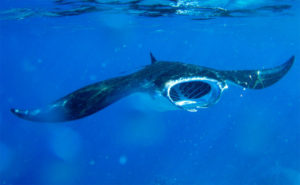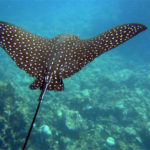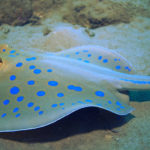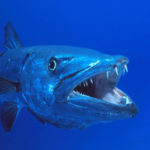Stingrays
 Stingrays are relatives of sharks. The first thing that unites them is that both have no bones, they are replaced by cartilages. Second, they live in the depths of the sea. The third thing is that they lead a predatory life. The habitats of stingrays, as well as sharks, are different latitudes and depths of the seas.
Stingrays are relatives of sharks. The first thing that unites them is that both have no bones, they are replaced by cartilages. Second, they live in the depths of the sea. The third thing is that they lead a predatory life. The habitats of stingrays, as well as sharks, are different latitudes and depths of the seas.
Look stingrays quite peculiar, at first glance, they resemble a children’s toy – a kite. They have a flattened body, as if squashed by someone from above. The body of the stingrays is covered with scales, the appearance of which resembles thorns. The structure of these spines is similar to the structure of the teeth. Immediately from the head are placed huge pectoral fins, it seems that they have grown together with the head. Swim stingrays with these fins, the work of which drives the entire body. These rays differ from their relatives – sharks, in which the main thing in swimming is their powerful tail.
The teeth of the stingrays fit tightly to each other, outwardly they look like a grater. Eyes are located on top of the head, eyeballs are densely grown to its base, which are completely devoid of blinking reflexes. The sizes at stingrays various: they can fluctuate from several centimeters to seven meters in length.
Stingrays, mainly are the bottomless inhabitants and favorite places of their residence are the sea depths. Since they are predators, they eagerly eat small fishes, crayfish, mollusks, which are found on the bottom of water bodies. Because they live, basically, at the bottom of the oceans and seas, the stingrays change the color of the dorsal part from sand color to black. This they adapt to the changing and treacherous bottom world and the color of the back changes for conspiracy. The habitats of stingrays are quite diverse: they can live in the cold waters of Antarctica and in the tropical seas. Very comfortable feel at a temperature of water up to 300C. Many types of stingrays live right off the coast, at a depth of one meter, but there are others that descend to the depth of the ocean to three kilometers.
Electric stingrays – this type of stingrays has a natural gift, an electric discharge, which can protect the ramp from the approaching danger or paralyze the prey – prey. The charge of electricity is laid in the place where the scalp and pectoral fins adjoin the head. The strength of the electric current discharge of an ordinary ray can reach up to 40 volts. This blow will be enough to stun a victim, paralyze it and then use it for food.



























